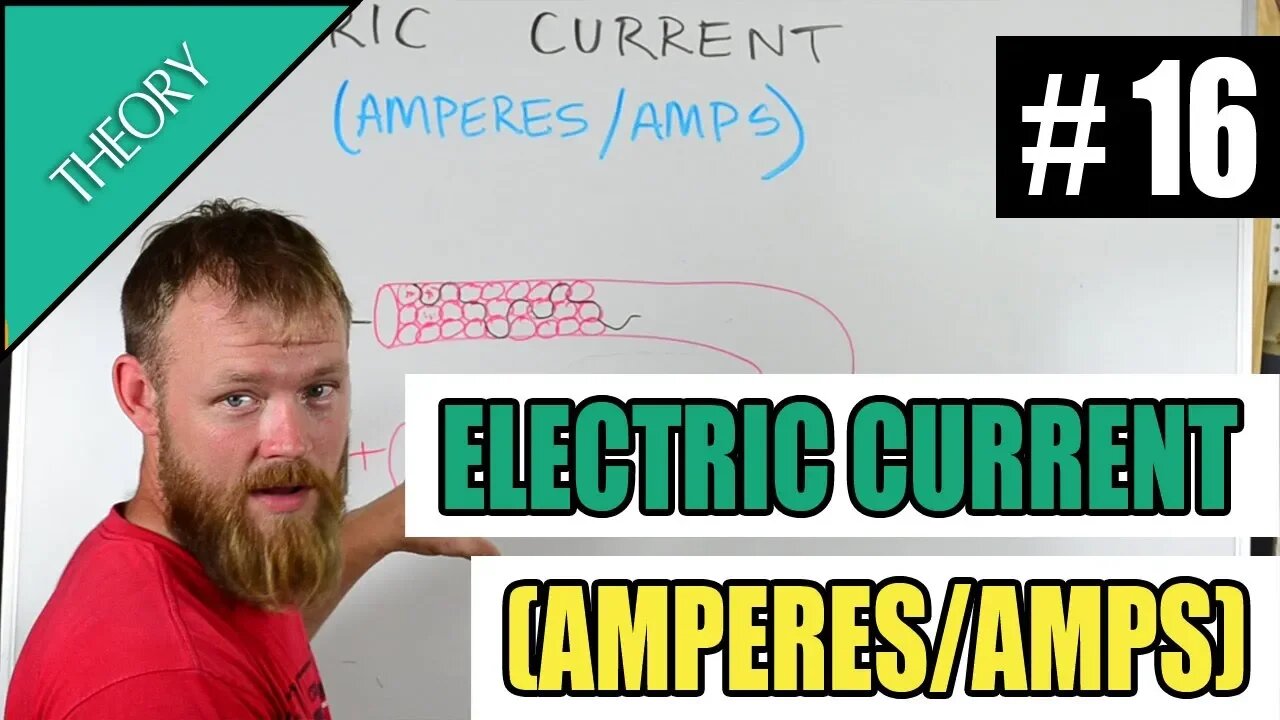Premium Only Content

Electric Current (Amperes/amps) - What Electricians Need To Know
Electric current is one of the hardest things to wrap your head around when you're first getting into the electrical trade. Many apprentice electricians get confused with the difference between current and amps. Well, that's because people talk about electrons and charges and interchange the terms without really knowing what the difference is.
👾🤖PRACTICE EXAMS🤖👾
https://www.electricianu.com/practice-exams
😎👕MERCH👕😎
https://www.electricianu.com/merchandise
📲👥SOCIALS👥📲
Instagram - https://www.instagram.com/electrician_u
Discord - https://discord.gg/7ykYfbh
Facebook Page - https://www.facebook.com/theelectricianu
Facebook Group - https://bit.ly/2tz7eQh
TikTok - https://www.tiktok.com/@electricianu
Electric current can be thought of like water current or wind current. Its a flow of an invisible force that can have tremendous power. In water current you have movement of oxygen and hydrogen molecules. In air current you have movement of oxygen, nitrogen, and hydrogen molecules. In electrical current you have movement of electrons in copper molecules. The movement of these electrons creates a magnetic current.
Electrons move about in many directions normally, but when a negative charge is introduced to a negative electron, they repel each other. Viola! We have movement. When we put a negative charge on one side and a positive charge on the other, we have a direction or path for the electrons to travel. This path is never straight, because the very nature of electrons is that they traverse their atom in a circular fashion. So when they leave their orbit, they enter another orbit and sort of swing from atom to atom, always randomly.
The more force you put behind a current the more "straight" the electrons will travel...relatively...but still never in a straight line. The more force you put behind current, as well as the amount of current flowing through a conductor, the more heat can build up. When more current passes through a conductor than it can handle, it will start to glow red hot (like a light bulb filament or a toaster element). This is overloading the conductor, and depending on the material it can melt or cause a fire over enough time. This is why we install fuses or breakers on electrical circuits. These fuses/breakers can detect how much current is flowing through a circuit and will disconnect the circuit before a dangerous situation arises.
There is a lot more to know about how current works, and some of the different things it does when introduced to certain components. But for now this is a crash course on the basics. If you have any questions feel free to comment below.
Please check out the Electrician U Facebook page and subscribe to the YouTube Channel if you like these videos! Also check out the Electrician U Instagram page.
**Disclaimer - These videos are for training purposes alone, all work done on electrical systems should be done by a licensed and insured electrical contractor. If you are not an electrician, do not attempt any of the work you are seeing in these videos.**
#electricianclasses #electricaltraining #electriciantraining #electriccurrent #amperes #amps
-
 0:56
0:56
Electrician U
1 year ago90° Drill Attachment!!! - What Hand Tools Are YOU Missing
5.7K1 -
 5:30:52
5:30:52
SpartakusLIVE
10 hours agoDuos w/ @GloryJean || #1 Masculine Muscle MASS sears YOUR retinas with MIND BENDING content
223K3 -
 3:05:49
3:05:49
TimcastIRL
9 hours agoNew DOCS PROVE Obama Hillary CONSPIRACY To SABOTAGE Trump Admin | Timcast IRL
225K135 -
 2:29:36
2:29:36
Laura Loomer
9 hours agoEP136: YOU'RE FIRED! White House Vetting Crisis Continues
63K39 -
 8:07
8:07
MattMorseTV
9 hours ago $6.71 earnedTrump just LOWERED PRICES by 75 PERCENT.
38.2K39 -
 11:27:53
11:27:53
Misfit Electronic Gaming
12 hours ago $4.99 earned"LIVE" "Blind Descent' +"Dollhouse of Dead" Playtest 10 Followers till we hit 1000! We CAN do this!
42K -
 21:53
21:53
Glenn Greenwald
11 hours agoMichael Tracey on the Street: What Do People Think of the Epstein Case?
129K59 -
 2:26:28
2:26:28
megimu32
8 hours agoOTS: Board Games Gone Wild! The Loud, Weird & Chaotic Games That Raised Us
38.9K9 -
 4:25:16
4:25:16
DamnDanieI
9 hours agoKill First, Loot Later – OTG Live
56.4K1 -
 56:41
56:41
Donald Trump Jr.
13 hours agoLies, Leaks, and Lawfare: Censorship Corruption Exposed | TRIGGERED Ep.263
182K165